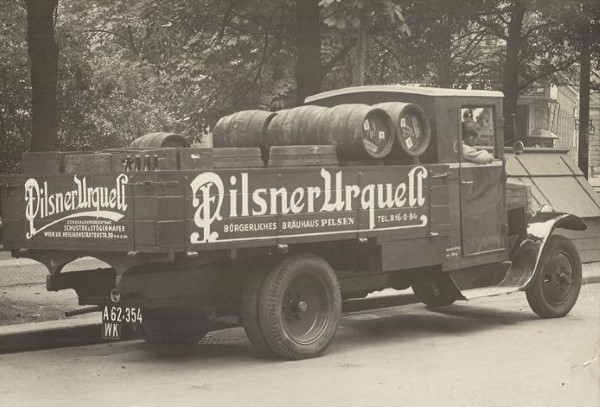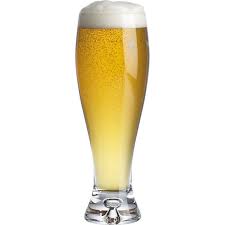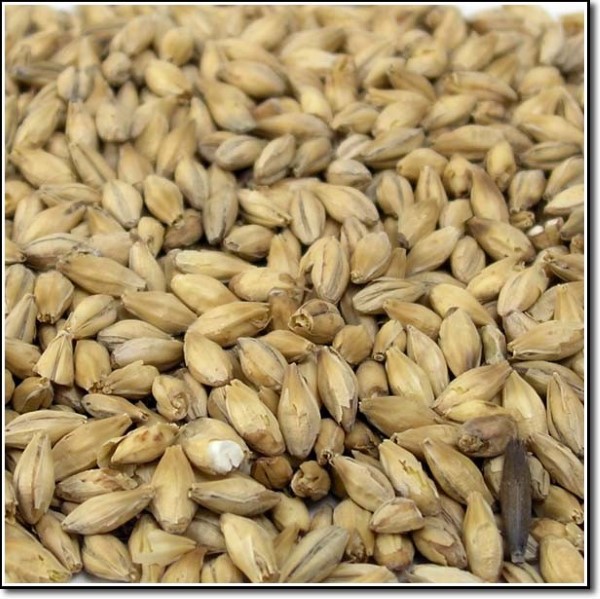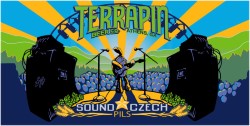
The original Pilsner
In 1964, Bob Dylan released his famed hit “The Times They Are a-Changin.’” When he wrote those words, they were a call for greater social awareness. Who knew that 50 years later it would apply so aptly to the craft beer world?
Yes, the times are a-changing for the craft beer industry. According to Jason Notte, in an article from marketwatch.com, the craft beer industry’s trademark of highly experimental styles is coming to a close. Notte highlights in his article that seasonal beers, such as the once-popular pumpkin ale (and other pumpkin variations), saw a 20 percent drop in sales in 2015. Varieties that were once sold out in a couple of months are now seen lingering on shelves at the same time the next seasonal has been released.
It seems craft brew drinkers have gone back to the basics. Instead of reaching for a peach coconut wheat, they are trending more toward the classic styles. And no style is trending quite like the Pilsner. The sale of craft-brewed Pilsners rose by 76 percent in 2015, and, while I have no quantifiable backing to claim so, I feel it will see even greater increases this year. With warmer weather ahead, there is no better time to enjoy a Pilsner.
Some of you may think you’ve never had a Pilsner, but you have . . . sort of. The style is generally considered the inspiration behind the American light lager, you know, beers like Bud Light, Miller Lite and Coors Light, but don’t let that turn you off from the true Pilsner.
So what is a “true Pilsner”? It depends on the style, really. With Pilsners, there are three styles, Czech, German and American, each with a distinctive flavor profile. To clarify the subtle differences among these styles, I spoke with J.P. Murphy, head brewer at Mayday Brewery. According to Murphy, the major difference between the styles come from the different water, yeasts and hops used in them.

The first Pilsner was brewed in Plzen, Czech Republic, in the mid 19th century (You can find this in stores, now known as Pilsner-Urquell, which translates in English to “original Pilsner”). It utilized the newly invented Pilsner malt, a malt which provided the palest beer that drinkers of the day had ever seen. This is the cornerstone of every Pilsner, and what gives the style its sweet, bready flavor profile. This was combined with Plzen’s extraordinarily pure natural water and Saaz hops. Saaz hops provide a flavor that some refer to as earthy or spicy, and the clean water helps the malt and hops to stand out.
As popularity for the Pilsner grew, German brewers decided to try their hand at it. However, their water had a much different profile than that of the Czech Republic, giving it its own unique flavor.
As Murphy explained “They have a lot harder water that has got a lot of sulfates in it, which accentuated this hoppiness, so they’re a lot hoppier.”
But that isn’t the only difference between the two. The Germans replaced the Saaz hops, which the Czechs use in favor of Tettnang and Hallertauer hops. The combination of these hops gives the German style a more floral and slightly brighter flavor, while still keeping just a bit of the earthy, yet somewhat spicy flavor the Saaz hops provide to Czech Pilsners.
Then there is the complex evolution, or devolution, of the American Pilsner. The Pilsner was introduced to the U.S. by German immigrants in the late 19th century, and it reflected the same beer they had been brewing in their homeland. However, a number of factors, climate, social and economical, transformed recipes gradually to what we see from macro-breweries today.
However, American craft brewers have begun to get back to a more full-flavored Pilsner. While most American brewers either choose to brew a Czech or German recipe, some have gotten a little more creative. Like the Germans took the Czech style and made it their own due to the available resources, American brewers have done the same.
“Those guys are probably playing off of the Germans coming over here. They probably add what we call an adjunct, which is something other than malted grain, in order for us to get sugar from (which is necessary for fermentation). So they could be adding rice, which is going to add no flavor whatsoever, but give you tons of carbohydrates to get sugar out of, or more than likely, they’re adding corn, because it’s a native American product,” Murphy said. “They are also, more than likely, using an American-style yeast which is typically way, way cleaner, and American hops which we see as, like, citrusy, piney or resinous.”

Pilsner malt
If you haven’t gotten on the Pilsner bandwagon early, your opportunities are likely to increase as more craft brewers are expected to release the style. Some Tennessee breweries have made the style available for your enjoyment. Nashville’s Jackalope and Yazoo are both offering Pilsners now. Jackalope’s Seven Cities gives the German-style a go, while Yazoo goes the American route. Memphis’ Wiseacre Tiny Bomb also goes American, but has a much different flavor profile from Yazoo’s version.
Mayday will also be providing Murfreesboro with a Pilsner. It is slated for release in late May or early June, and will be a limited release small batch available only at the brewery. Visit maydaybrewery.com to stay up to date on its exact release date, and on other small batches from Mayday.
In the light of the recent revival of the Pilsner, I felt it appropriate to offer you my personal opinion of a few of the style. Again, this is expressly my opinion. Each person has a very different palate, and since a baseball broke my nose when I was five years old, my sense of smell isn’t the best. Well the following reviews may give you some idea what to expect, only by trying them yourself can you formulate your own opinion.
Pilsner Urquell
The original Pilsner, but one must wonder if it’s the original recipe. Pilsner Urquell is owned by the MillerCoors company, and oftentimes macro breweries will alter recipes in the interest of higher profit margins. Even so, it can’t be ignored when discussing the style. Pilsner Urquell appears copper in color when poured in a pint glass with a thin layer of head. The nose offers a good amount of a toffee scent with a bit of a spice note. The malt taste is a bit more subtle on this one than other offerings, but the earthy spiciness of the Saaz hops are apparent and lingering. As with basically every offering I sampled, it is dry, crisp and good for a session. Unfortunately, Pilsner Urquell bottles in dark green bottles, which allow significantly more light through than amber bottles. This produces off flavors in the beer that the brewer didn’t put there, so it can be a bit skunky. I would suggest not picking this up from your grocer, as they are typically even more exposed to light in that setting as opposed to going to a liquor store.
Warsteiner
Warsteiner is probably one of the first German beers you heard of or tried. It was the first German beer I had back in college, and I remembered liking it, but time changes many things. While it receives respect in the states, it’s not so respected in its native land. Warsteiner in Germany is the equivalent of Bud Light amongst American craft brew enthusiasts. While it claims to be a German Pilsner, I did not find it to match the traditional definition of one. It pours copper in color with a thin head and offers a smell of sweet malt and caramel. It has a sweet bready taste on the front with a slight citrusy hop finish. It’s not as dry as other Pilsners I tried, tending more toward sweet. Strange as German Pilsners are typically drier and hoppier than their Czech counterparts. This might be okay if you are transitioning from American macro brews to imports, but otherwise a bit underwhelming.

Bitburger
Before moving to Murfreesboro, I worked with a woman from Germany and she identified Bitburger as the beer of her youth. I was much more pleased with this one than its fellow German beer, Warsteiner. It pours a translucent gold with a moderately thick head. It smells of biscuits with grassy and floral notes. The smell comes through on the taste, as the biscuit and floral hop notes are apparent. Its crisp and light, perfect for a warm day with friends on your patio. This one truly hits the mark on the traditional German Pilsner.
Lagunitas Pils
The California brewer knocked it out of the park with their take on a Czech-style Pilsner. It pours a translucent gold with about a quarter inch of head on top. It smells of sweet malt and floral hops which comes through on the taste, with just a hint of pine on the floral hop notes. It’s a little hoppier than a traditional Czech-style, but you can expect that from a west coast beer. It’s very crisp, off-dry, and goes down smooth as silk. My personal favorite Pilsner.

Terrapin Sound Czech Pilsner
A clever play on words from the Georgia brewer. This one poured a straw color with a thin head. There was a subtle scent of ripe bananas along with a floral essence. Those scents don’t quite come through on the taste, as crackers and the trademark Saaz hops earthiness are more apparent. Crisp and dry, I’ll have this one again if I see it on tap somewhere, not sure if I’d throw down for a six-pack though.
Wild Heaven Emergency Drinking Beer
Another offering out of Georgia, this one is a marriage between getting back to the basics of brewing and being highly experimental. While Pilsners typically use a lagering yeast in the brewing process, this one is a Pilsner that utilized ale yeast. Coriander salt is also a key ingredient, one that I’ve not seen in any other beer. It pours a hazy straw color with a thin head. Most Pilsners are clear or translucent, but the haziness is probably due to the ale yeast. Just do yourself a favor and don’t smell this one! Thank goodness it tastes better than it smells, but it smells like wet garbage. The front taste tastes of toasted bread quickly followed by the coriander salt, and it finishes with a bit of a citrus-y hop note. Again, dry and crisp. Like Terrapin, probably wouldn’t buy a six-pack, but wouldn’t mind having one on tap from time to time.
Wiseacre Tiny Bomb
While at least one well-known website calls this a Czech-style Pilsner, the Memphis brewer calls it an American Pilsner, and I definitely get that more than the Czech-style. I thought my review for this one was going to be much different. The first time I bought a six-pack of this, I definitely got an odd taste that I would akin to buttered popcorn Jelly Belly jelly beans. I apparently got a bad batch or expired six-pack. The buttered popcorn flavor is evidence of diacetyl or DMS, two possible chemical reactions from something having gone wrong in the brewing process. Instead, I got a much better representation on my second try. It pours a pale yellow with a thick head. The nose is more subtle than other Pilsners, but I did get notes of grass and corn along with Pilsner malt. The taste offers brief sweet malts which are followed by Noble hops. This one is an off-dry mouthfeel, and is probably the most highly carbonated on the list, but not overly so. If you are looking to make a jump from American light lagers, this is a great gateway beer.
Jackalope Seven Cities German-style Pilsner
The Nashville brewer produces what might be the best brown ale on earth, and their rye red ale isn’t too bad either. But how do they do with a German-style Pilsner? Like most Pilsners, you get that translucent gold with a thin head when poured. The typical characteristics of a German Pilsner were difficult to pick up in the nose. While the Pilsner malt was detectable, the hops were very, very subtle. Much like the smell, a lot more malt than hops in the taste. It’s not a bad beer, just not what I was expecting from a German Pilsner, as they typically are a bit more hoppy. I kept waiting for that hop finish, but it just never happened for me.

Yazoo Daddy-O
Yazoo probably doesn’t get the respect it deserves amongst other Nashville brewers. Are they the best? No, but they were the first, and they paved the way for the younger, more popular breweries. While most of their beers are good, but not great, I really feel like they have something with Daddy-O. You can find this in six-packs in stores, but the packaging is a bit confusing and it looks more like the name of the beer is “Playoffs.” What you can get in stores, however, isn’t the same as what I tried on tap, which is a limited release dry-hopped version. This one poured a slightly hazy gold with a thin head. The nose was a very apparent floral and citrus hop note which left the malt note in the background. While the smell was more hops, the taste seemed reverse with a breadiness on the front and a subtle bitterness on the back taste. It’s a very light and crisp beer, and another that’s great for a tailgating or just sitting on your patio.
These are only a handful of offerings from craft breweries available in our area. Some other offerings available include Sierra Nevada Nooner, New Belgium Blue Paddle, Scrimshaw Pilsner, and Oskar Blues Mama’s Little Yella Pils. So, in the comments below, tells us which Pilsners you love. Drink responsibly!













